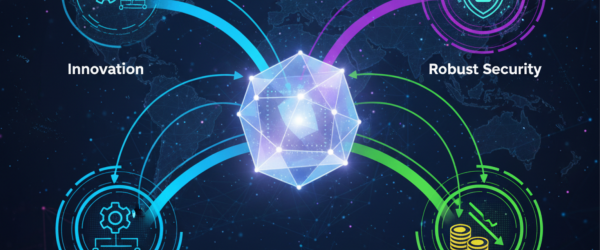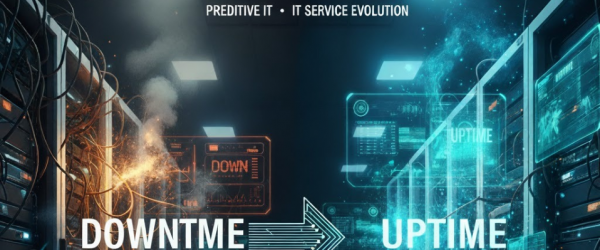Introduction
The digital transformation era has a universal foundation: cloud computing. It is the invisible engine powering everything from the apps on your phone to the global operations of Fortune 500 companies. But beyond being a mere storage location, the cloud is a dynamic force that fundamentally redefines how modern tech ecosystems operate and compete.
For business leaders and tech professionals, understanding the cloud’s core value propositions is no longer optional. This blog will dissect how cloud computing is the critical catalyst for three non-negotiable business outcomes: Agility, Security, and Scalability.
The Paradigm Shift: From Capital Expense to Strategic Enabler
The old model of on-premises infrastructure involved massive upfront investments in hardware, long procurement cycles, and a static, rigid IT environment. The cloud shatters this model, offering a pay-as-you-go service that transforms IT from a capital expense (CapEx) into an operational expense (OpEx). This shift is the bedrock upon which agility, security, and scalability are built.
1. Unmatched Business Agility: The Speed to Innovate
In a fast-moving market, the speed of your business is determined by the speed of your IT. Cloud computing injects velocity into every stage of development and operations.
- Rapid Provisioning: What used to take weeks for IT to procure, set up, and configure servers can now be achieved with a few clicks in a cloud console. Development teams can spin up new environments in minutes, dramatically accelerating time-to-market for new features and products.
- DevOps and Continuous Integration/Deployment (CI/CD): The cloud is the native home for DevOps practices. It provides the tools and elastic infrastructure to automate testing, integration, and deployment, enabling teams to release software updates frequently and reliably.
2. Enhanced and Centralized Security
A common misconception is that the cloud is less secure than on-premises data centers. The reverse is often true. Leading cloud providers invest billions in security infrastructure, talent, and innovation that most individual companies cannot match.
- Shared Responsibility Model: Security in the cloud is a shared duty. The provider (e.g., AWS, Azure, GCP) is responsible for the security of the cloud (hardware, software, networking). The customer is responsible for security in the cloud (data, access management, and application security). This model allows businesses to leverage world-class security as the foundation.
- Built-in Compliance and Governance: Cloud platforms offer a vast array of compliance certifications (like GDPR, HIPAA, SOC 2) out of the box. They provide tools for automated policy enforcement, centralized logging, and encryption, making it easier to maintain a strong security posture.
- Advanced Threat Detection: Cloud providers integrate AI and machine learning to offer services that detect and mitigate threats in real-time, such as anomalous login attempts or potential DDoS attacks.
3. Limitless and Elastic Scalability
This is the cloud’s flagship feature. Scalability is the ability of a system to handle growing amounts of work by adding resources. The cloud makes this process seamless and automatic.
- Horizontal vs. Vertical Scaling: Easily scale out by adding more instances of a server (horizontal) or scale up by adding more power (CPU, RAM) to an existing instance (vertical).
- Auto-Scaling: Cloud services can be configured to add or remove resources based on real-time demand automatically. An e-commerce website, for instance, can automatically scale up during a holiday sale and scale down afterward, optimizing both performance and cost.
- Global Reach in Minutes: Cloud providers have data centers worldwide. This enables businesses to deploy their applications across multiple geographic regions with low latency, ensuring a fast experience for their global user base and built-in disaster recovery.
The Cloud Trifecta: A Comparative Advantage
| Business Need | On-Premises Challenge | Predictable Operational Expenditure (OpEx); Pay only for what you use. |
|---|---|---|
| Agility (Speed) | Weeks to months for new server provisioning. | Minutes to hours with on-demand services. |
| Security | High upfront cost for advanced tools; in-house expertise is limited. | Access to state-of-the-art, continuously updated security services and global expertise. |
| Scalability | Requires buying and maintaining excess “peak” capacity, leading to waste. | Pay-per-use model with automatic, infinite scaling to meet exact demand. |
| Cost Model | High Capital Expenditure (CapEx) with unpredictable maintenance. | Predictable Operational Expenditure (OpEx): Pay only for what you use. |
| Reliability | Single point of failure; complex and expensive disaster recovery setups. | Built-in redundancy across multiple global data centers and availability zones. |
Conclusion: The Cloud as the Indispensable Ecosystem
Cloud computing is no longer just a technology trend; it is the default operating model for modern tech ecosystems. It provides the foundational agility to outmaneuver competitors, the robust security to protect critical assets in a complex threat landscape, and the effortless scalability to grow without constraints.
For any organization looking to thrive in the digital economy, the strategic adoption of cloud computing is not a question of “if” but “how.” It is the essential platform for building a resilient, innovative, and future-proof business.







